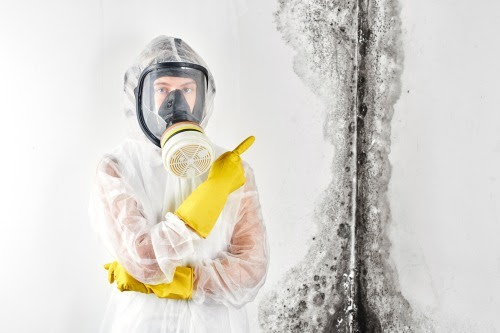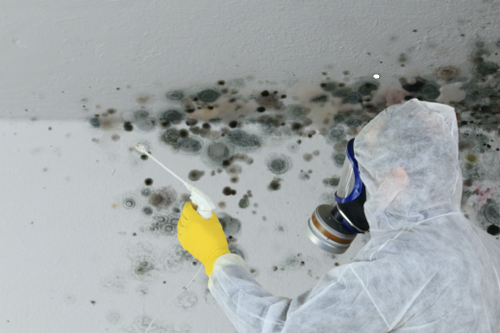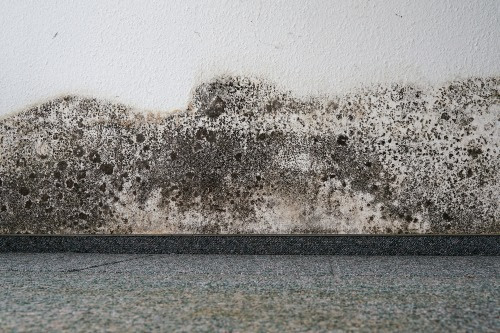Mold Removal Service
Home » Services » Mold Removal
Our company is certified to provide you with the best cleaning and remediation services necessary for mold removal. We also have the right gear and cleaning agents that ensure complete removal of the mold spores from the roots.

Get Professional and Experienced Mold Removal Services
In case of damage to the property, we also provide home repairs on walls, ceilings, and other mold-infested surfaces. Our agents are well-trained and knowledgeable, who would recommend you with effective tips and tricks to prevent mold regrowth.
Since mold quickly spreads, thus we suggest you get professional assistance as quickly as possible. Contact us now to evaluate your site for potential mold growth and discuss treatment methods suitable for your home. We also guarantee using non-abrasive cleaning solutions and techniques to prevent further damages to your property.
NYCleaners Mold Removal Guide
How Mold Exposure Can Affect Your Health
Mold, a type of fungus, is present everywhere in the atmosphere. Typically, our air carries tiny spores of mold, but that is not hazardous for people with a healthy immune system. However, exposure to black mold is dangerous as it can aggravate respiratory problems in asthmatic people.
However, there is no scientific evidence that black mold exposure can cause impaired memory, fatigue, and headaches. Nor is there any indication that mold can lead to pulmonary hemorrhage or autoimmune disease in infants.

Some kinds of mold can even cause infections in people with weakened autoimmune system. Such infection can affect the lungs, eyes, and skin. Therefore, those with kids often search for mold removal companies, as younger people have weak autoimmune.
What Parts of Your House is Vulnerable to Mold Exposure?
Mold is one of the most inevitable and unavoidable problems that homeowners suffer from. Although quite prevalent, mold removal requires professional services.
According to the air cleaning specialist, AerIndustries, eliminating and controlling mold through DIY treatments is not possible. You may be able to clean the surface, but it usually penetrates deeper inside the surface. Thus hiring professionals is highly recommended.
9 Most Common Molds You Can Find in a House
Common Molds
Mold virtually grows everywhere and can be potentially hazardous for your health. The exact number of mold species isn’t known, but estimates vary between tens to hundreds. Each mold type has specific characteristics, growth patterns, and health effects. We can classify mold into three different categories, including:
Allergenic: These mold types cause allergic reactions, such as respiratory problems and skin rash.
Pathogenic: They can cause infections and illnesses among people with compromised autoimmune system.
Toxigenic: Molds that dissipate toxic chemicals and gases that lead to severe health complications are toxigenic.
Here, we discuss nine common types of mold that you can find in your home:
Acremonium
They are the toxigenic mold type that changes its form over time. It grows as a small damp mold but quickly becomes dry and powdery. They are often pink, grey, orange, and white and grow in areas such as HVAC systems, humidifiers, coils and drain pans. They pose a significant threat to human health and cause diseases related to bone marrow, autoimmune system, and other organs. It is marked as a carcinogen and can even impair brain functions.
Alternaria
It is the most common allergenic mold type known for its velvety texture and dark green or brown hair. Like many other mold types, alternia also grows in damp areas, such as bathtubs, showers, and leaked sinks. Water damage buildings and homes suffer greatly from these mold types. An allergenic fungal, alternia can cause asthma-like symptoms in people who have asthma. It is highly necessary to remediate this mold type since it spreads quickly onto surfaces and leading to long-term damages.
Aspergillus
It is the most common household mold in America with 185 different species. These molds appear in different colors, but they all grow out from long, flask-shaped spores. Typically, aspergillus appears in long chains of mold marks transferring on various surfaces. Originally, aspergillus is an allergenic type of mold. However, it can become toxic depending on the surface it grows on and the environment it thrives in. As an allergen, it causes respiratory problems, lung infections, and asthma, whereas as a toxin, it emits harmful carcinogens.
Aureobasidium
It is the second most popular allergen mold that grows on walls and wooden surfaces. Usually, it appears in pink or light brown but darkens over time. It causes skin problems and affects eyes and nails as well. Since aurebasidium can cause a skin rash, thus it cannot be touched directly with bare skin.Chaetomium
This kind of mold grows on water-damaged surfaces, including your home. It has a cotton-like texture and appears in white. As the mold ages, it changes color from white to brown and ultimately black. The most common places where chaetomium can grow are leaky roofs, basements, and basins. The mold is easy to recognize due to its musty odor.Cladosporium
It is another widespread allergenic mold type, known for its unique characteristics. The mold can grow in both hot and cold conditions, thriving mostly in fabrics and wood. You can find them in upholsteries, carpets, floorboards, and cabinets.It can irritate the eyes, nose, respiratory tract, and skin. Although it is not toxic, you should not handle Cladosporium directly as it can cause asthma, lung infection, and sinus.
Fusarium
This mold type can only survive in colder regions with allergenic and toxigenic properties. Typically, you find them in carpet, wallpaper, paper-based material, food products, and compost. It appears in pink, white, or reddish patches that spread quickly over the surfaces.You may experience skin infection and general allergic symptoms such as sore throat, runny nose, and itchy eyes. Prolonged exposure can lead to life-threatening conditions, including bone infections and brain abscess, which causes internal bleeding and brain hemorrhage.
Mucor
It is an allergenic mold form commonly found in thick patched around the HVAC systems. It is often in grey or white color and formed due to condensation. However, the spores spread quickly, and you can find them on old carpets and rugs. However, it is quite a common mold type, but it can lead to several health complications, including respiratory issues, flu-like symptoms, fever, and malaise. If exposed for longer durations, this mold type can also lead to mucormycosis, an illness that damages lung, sinuses, and brain.Penicillin
It is an easily recognizable mold due to its appearance. This velvety bluish-green mold thrives in water-damaged areas. However, it grows on fabric or paper-based surfaces, including carpets, wallpapers, mattresses, and ducts. Though highly beneficial for manufacturing processed food and antibiotics, exposure to penicillin can lead to severe breathing problems, pulmonary inflammation, and asthma. It is an airborne mold type thus can travel throughout the home or building.What Tools and Materials You Need to Remove Molds?
Mold is a severe health hazard that can damage your home and health. Typically, mold removal and remediation require professional help due to the complication of the process, but many homeowners opt for skilled DIY treatments.
This guide will help identify the required tools and safety gears used during the mold removal process. You can find most of the materials at any hardware or home improvement stores; you can even order them online.
Protective Gear
: Before you start cleaning, mold using DIY kits, it is quite necessary to cover up yourself. This will protect you from developing any kind of allergies, skin rashes, or other health problems.
Disposable Gloves: They are available in different materials, including latex, vinyl, and nitrile. However, the size of the glove is much greater when it comes to protection against mold. Spores can easily come in contact with your skin if you are wearing the wrong size. However, don’t touch your face, mouth, or nose when cleaning mold, increasing the chances of inhaling the spores.Facemasks: It is highly important to cover your face when cleaning mold, but you can’t wear any type of face-mask. Air-purifying respirators, such as N95 or P-100, are ideal since they filter out the mold particles. You can easily find them online.
Safety Goggles: They keep your eyes protected against mold spores and other forms of debris. Cutting out drywall and scraping off damp surfaces to remove mold spores releases various particles in the air that could damage your eyes. You will need these goggles to protect your eyes from the harmful chemicals present in the mold cleaners.
Disposable Hair Covers: They are similar to shower caps to protect your hair against mold contamination. Mold spores are potentially dangerous for your hair and can penetrate deeper into the hair roots and scalp.
Disposable Shoe Covers: You need to keep your shoes covered so that mold spores don’t travel from one place to another. Also, certain mold types can thrive in shoes. On prolonged exposure, the mold can cause various types of skin and nail infections.
Special Suits: Instead of wearing separate gears, you can buy yourself a Tyvek suit, which will even cover your clothes as well. You should always remove the protective layer of clothing at the worksite, so you don’t spread mold all over the place.
Negative Air Machines
You will need negative air machines, during mold remediation, to filter the air and remove excess moisture. Always use high-quality, HEPA-filter machines to prevent cross-contamination. The most common negative air machines are as follows:
Air Movers: They remove moisture from the surfaces and direct mold spores into a contaminated area. It will also improve airflow and, if placed strategically, can mitigate the chances of mold contamination.
Dehumidifiers: They are placed in the room to disperse cold air, which relatively holds less amount of moisture. It will effectively bring down 40% of the humidity level, thus reducing chances for mold to thrive. However, you need to be careful with the size of the humidifier concerning the space. The right size of the dehumidifier will keep the humidity level between 30%-50%, making it less likely for mold to become pervasive.
Air Scrubbers: They remove airborne contamination, including the mold spores. They have HEPA filters installed, thus are highly eco-friendly. These scrubbers are also used in fire-damaged buildings as it effectively removes smoke as well.
Duct Tapes and Plastic Sheets
. Before you start mold removal treatment, you need to cover up the unaffected areas so that mold doesn’t cross-contaminate the spaces. Duct tapes and plastic sheets completely block the air or water passage, thus mitigating mold transference.
Scaffolding
. You will need a high ladder to clean off mold from different spaces such as attic or ceiling.
HEPA-Filter Vacuum
. You should always vacuum mold-infested surfaces, such as carpets, floors, and upholstery, before and after the remediation process. mitigating mold transference.
Wire Brushes
. To scrub off hard surfaces, you will need brushes. This will penetrate the cleaning agents deeper into the surface for effective cleaning. However, porous surfaces such as floorboards would require replacement.
Biocides
. You would need a reliable cleaning agent to eliminate mold. Bleaches and other kinds of detergents many only mask the surface while biocides will treat the root cause and prevent continuous growth.
Fans
. After cleaning the space thoroughly, you will need to air out the rooms. This will remove the stagnant air as well as eliminate the airborne mold spores. The process will remove excess moisture as well as bring down humidity levels.
From Carpets to Furniture: Mold Removal Process

Treating the Moldy Carpets:
- Use a utility knife to cut off musty and stained carpets into 6×8 ft.
- Mist the surface with water using a pump sprayer
- Double wrap it in a plastic bag and seal it with duct tape to prevent air contamination
- Dispose of the heavily damaged carpet pieces and sprinkle your DIY cleaning agents on rest of the carpet and underneath the surface; i.e., floor
Pro Tip: Dishwashing detergents, vinegar, baking soda, Lysol, tea tree and grapefruit seed oil are effective at removing mold from the carpet.
Removing Mold from Walls and Ceilings:
- Remove baseboards and wall trimmings from the contaminated area
- Cover rest of the room with plastic sheets and duct tape for a protective barrier
- Seal all the openings including doorways and windows
- Use a screwdriver to probe the moistened area further
- Turn off the power outlets and locate the wires to avoid accidents
- Scrape off the drywall beyond the prominent mold marks
- Replace the wall sheathings and treat the area with a preservative
- Dispose of the moldy materials in a heavily sealed plastic bag
Pro Tip: Vinegar and bleach are effective in killing mold spores on walls and ceilings.
Cleaning Mold on Tiles and Window Sills:
- Scrub off tiles and window sills using a hard bristle brush
- For porous surfaces such as floorboards and wooden furniture, use a rag to prevent damage
- Mist the surface with a cleaning agent
- After 2-3 hours, wipe off the surface instead of rinsing it.
- Dry off the area entirely before re-paint. Else, the paint layer will peel off
Pro Tip: Don’t use abrasive cleaners. You can easily find diluted solutions suitable for wooden surfaces.
Although DIY kits and tips are available on the internet, hiring a professional, such as Cleaning Service NYC, is wise. Mold is hazardous for health, and our professionals have the experience as well as the right tools to clean off the mold from any surface.
Consequences: Don’t Ignore the Growing Mold in Your House
Mold Causes Structural Damages
On continual exposure, mold can affect the interior structure of the home. It grows on organic surfaces such as wood, walls, papers, and damp areas; it can damage the integrity of your property, thus reducing its lifespan.
Mold Growth Indicates Larger Problems
Mold often grows on water-damaged surfaces; thus could be a sign of more significant problems in your home. Visible marks on the walls and floors indicate that your home requires water fixtures.
Mold Damage Can Be Expensive
Since mold damage can lead or point to structural damages, thus call for expensive home repairs.
Mold Removal Is Complex
Cleaning mold from the home and various surfaces is a long, complex process. Typically, you require professional assistance to treat mold-infested areas.
Mold Is Smelly
Mold often releases pungent, musty smell before showing visible marks and stains. If you experience or someone points it out to you, better get your home checked.
Mold Is A Health Hazard
Mold can trigger or onset many health issues, including allergic reactions. Prolonged exposure can cause life-threatening complications related to brain impairment, organ failure, and infections.
Mold Devalues Your Home
A mold-infested home will lose its current value as it points to major overhauls and repairs. Certain mold types even attract insects which would require further treatment.
Mold Devalues Your Home
A mold-infested home will lose its current value as it points to major overhauls and repairs. Certain mold types even attract insects which would require further treatment.
Mold Removal Basic Safety Precautions
If you have are planning to clean mold concentrated surfaces, we recommend taking the necessary safety precautions:
- If you don’t have a special Tyvek suit, wear old clothes
- Remove your clothes at the worksite, when going into another room or other parts of the property
- Always wear safety gear, including respiratory masks, goggles, and gloves
- Throw away all the used stuff
- Use an old fan to ventilate the worksite and dispose it off once you have cleaned the space
- Double-bag and seal moldy debris in 6mm plastic wraps
- Tape the opening to prevent airborne transference
- Moisten the infested area to protect spores from traveling
- When cleaning, turn off the furnace and air conditioning units to avoid mold infestation on cooling ducts and coils
Submit your review | |
1 2 3 4 5 | |
Submit Cancel | |
NYCleaners is an astounding organization for taking care of all your mold removing issues. Their staff dealt with my mold issue in my wardrobe and washroom efficiently. They likewise were mindful so as not to harm any of my tiles in my washroom. I highly recommend them if you ever need any mold remediation work done in your home. 10/10
NYCleaners has very efficient staff. They had the ability to rapidly analyze and fathom an issue of the mole remediation in the storeroom of my home. They additionally examined to discover the main source of the harm. The staff was extremely quick and careful, finishing the work in one day.
I was at my friend’s home and suddenly the water pipe broke out in his washroom. The damage was very high that he had to call mold removal service. I suggested him NYCleaners, he used them and he was also surprised to see the results after they had work of 1 day. The washroom was all new. Appreciated
Stunning assistance and marvelous staff. Happy with the work they did! They are extremely expert and clean with their work. They even called to see a couple of days later if everything was alright.
Recommended!


